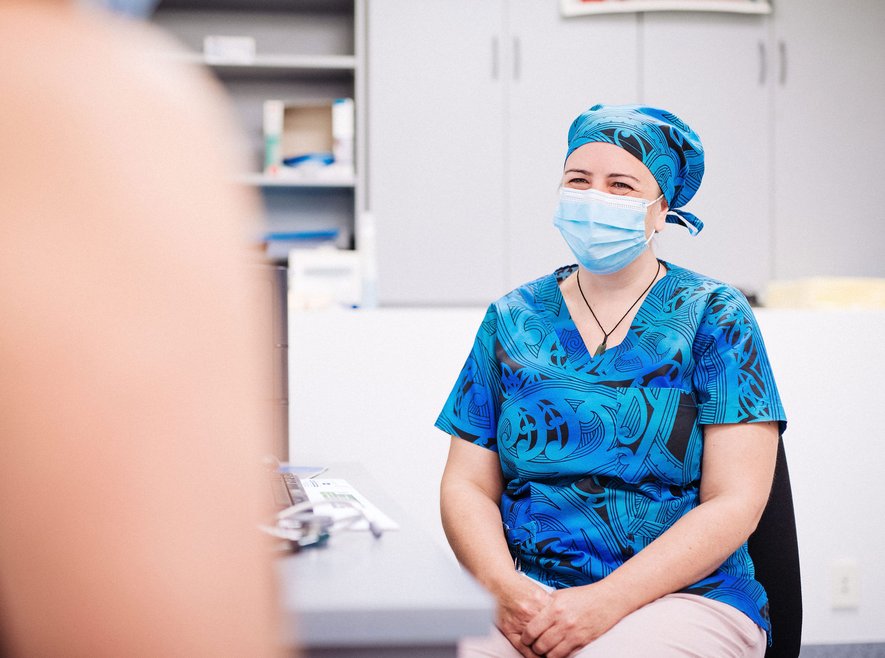1.1 Patient's rights
1.1 Informing patients of their rights
The purpose of the Code of Health and Disability Services Consumers’ Rights 1996 (The Code) is to protect a patient’s rights as a health consumer and to help resolve any complaints they may have if they feel those rights have not been protected. A patient must always be treated with respect, including respect for their culture, values, beliefs, and personal privacy.
| Standard – what we’ll be assessing on | Evidence to provide for assessment |
|---|---|
|
1.1 The practice understands, promotes and implements the Code of Health and Disability Services Consumers’ Rights 1996. |
|
The Code not only makes the rights of patients clear, but it also sets out the obligations and duties of health providers to comply with the Code. It is a regulation under the Health and Disability Commissioner Act 1994.
To help patients understand their rights and what to do in case of a breach, it is essential the practice has information on advocacy and the Code on display as well as for patients to take away. These resources can be accessed from the Health and Disability website.
The rights of patients are:
- The right to be treated with respect
- The right to freedom from discrimination, coercion, harassment and exploitation
- The right to dignity and independence
- The right to services of an appropriate standard
- The right to effective communication
- The right to be fully informed
- The right to make an informed choice and give informed consent
- The right to support
- Rights in respect of teaching or research
- The right to complain.

Interpreters
Patients who are deaf, hard of hearing, have language difficulties or language barriers need additional assistance to help engage them in their health care. Before a patient can give informed consent, they first need to understand their diagnosis and participate in decisions around proposed treatment options. It is the patient’s right to receive this assistance and essential that the practice team know about and have access to these resources when a patient requires it.
Many practices can access free sign language interpreters and language interpreters through their DHB and/or PHO for their enrolled patients. When patients enter a general practice, it must be obvious that these services are available to them.
The team must be able to access interpreters and resources for people with limited English language proficiency. Where possible, engage the services of an experienced interpreter who has been trained in medical terminology and concepts. The practice needs to hold a list of contact details for interpreter services for the team members and patients.
The use of trained interpreters is often not possible because of lack of access or high cost. Friends and family members are frequently used as ‘communicators or de facto interpreters for the patient, but is not an ideal option, especially when young children may be the interpreter. Any requirements and provisions the practice identifies for each patient must be clearly documented and the need for any interpreter flagged in the patient’s clinical record.
Consider how the team can identify patients with hearing language or speech difficulties. Once these patients have been identified, the practice will need to make provision for these patients to communicate with the practice. For example, consider whether lip-readers can clearly see the receptionist’s face (for example, they are not obscured by a mask, a computer screen or high counter top).

Training
All team members are to complete the Code of Health and Disability Services Consumers’ Rights 1996 training once. The College will accept in-house training, for example, a team member who has completed the training themselves may train others providing they are competent to do so. The training must be documented correctly.
Recommended training materials from the Health and Disability Commissioner are included below.
Open disclosure in health care
Open disclosure is the open discussion with the patient or their whānau/family of adverse events that result in harm to a patient while receiving health care.
Patients and their whānau must be communicated with in an open, honest, timely and transparent manner if something goes wrong, they experienced harm, or they could have experienced harm as a result of the care they received.
The intent of open disclosure is to provide factual information with sensitivity and empathy, including discussing arrangements for further support and ongoing treatment if required. Open disclosure may involve one discussion or may continue over a series of discussions with patients and their whānau/family.
Open disclosure always begins with the identifying the incident and is resolved when the patient and their whānau/family are satisfied that no further discussions are needed, or when they are provided with avenues to address any ongoing concerns.
The most important aspects include leadership, communication, training and education, and measurement and evaluation. It is also important that open disclosure be aligned with the practice's adverse events policies and processes.
Open disclosure policy
When developing an open disclosure policy, please refer to the Health and Disability Commissioner’s guidance on open disclosure policies).
The policy and procedure must include the following features:
- A consumer must be informed about any adverse event, i.e., when the consumer has suffered any unintended harm while receiving health care or disability services. A provider must acknowledge any complaint in writing within 5 working days (Right 10(6)(a)). Exceptions apply.
- An error that affected the consumer’s care but does not appear to have caused harm may also need to be disclosed to the consumer. Notification of an error may be relevant to future care decisions, for example whether or not to go ahead with the same procedure on another occasion. The effects of an error may not be immediately apparent.
- A disclosure must include acknowledgement of the incident, an explanation of what happened, how it happened, why it happened and, where appropriate, what actions have been taken to prevent it happening again. (In some situations, specific actions will need to be taken straight away, whereas in other situations where the circumstances are still unfolding, the actions that need to be taken may take longer to identify.)
- How a sincere apology will be delivered. An apology is the provider’s opportunity to say, ‘We are sorry this happened to you.’ It is not about allocating blame for the event’s occurrence but acknowledging the seriousness of an adverse event and the distress that it causes. Apologies can bring considerable comfort to the consumer and have the potential to assist with healing and resolution. In some situations, an apology may be critical to the consumer’s decision about whether to lay a formal complaint and pursue the matter further.
- The consumer must be given contact details and information about the local health and disability consumer advocate as well as options for making a complaint.
- Process for reporting incidents and the designated person (people) responsible and reporting timelines.
- Which practice team members are involved in the disclosure, when/where/how should the disclosure take place.
Links to resources
-
RNZCGP chaperone poster
-
Online learning: Code of Health and Disability Consumers’ Rights for providers
-
healthLearn ‘The Code’ training
-
Nationwide Health & Disability Advocacy Service: Advocacy Service Provider Education
-
Code of Rights education sessions online via Skype/Zoom
-
Office for Disability Issues: Disability etiquette
-
Health & Disability Commissioner
-
Office for Disability Issues: Guidance and resources
-
Health and Disability Commissioner: Free publications (including the Code of Health and Disability Services Consumers’ Rights 1996
-
Health and Disability Commissioner: Advocacy Leaflet
-
Office for Disability Issues: Be. Accessible Business Toolkit
-
Learn online: open disclosure
-
Health and Disability Commissioner’s guidance on open disclosure policies
-
Medical Council of New Zealand: Disclosure of harm following an event
-
Health Quality & Safety Commission New Zealand: National Adverse Events Reporting Policy
-
HQSC: National Adverse Events Policy 2023 (Healing , learning and improving from harm)
